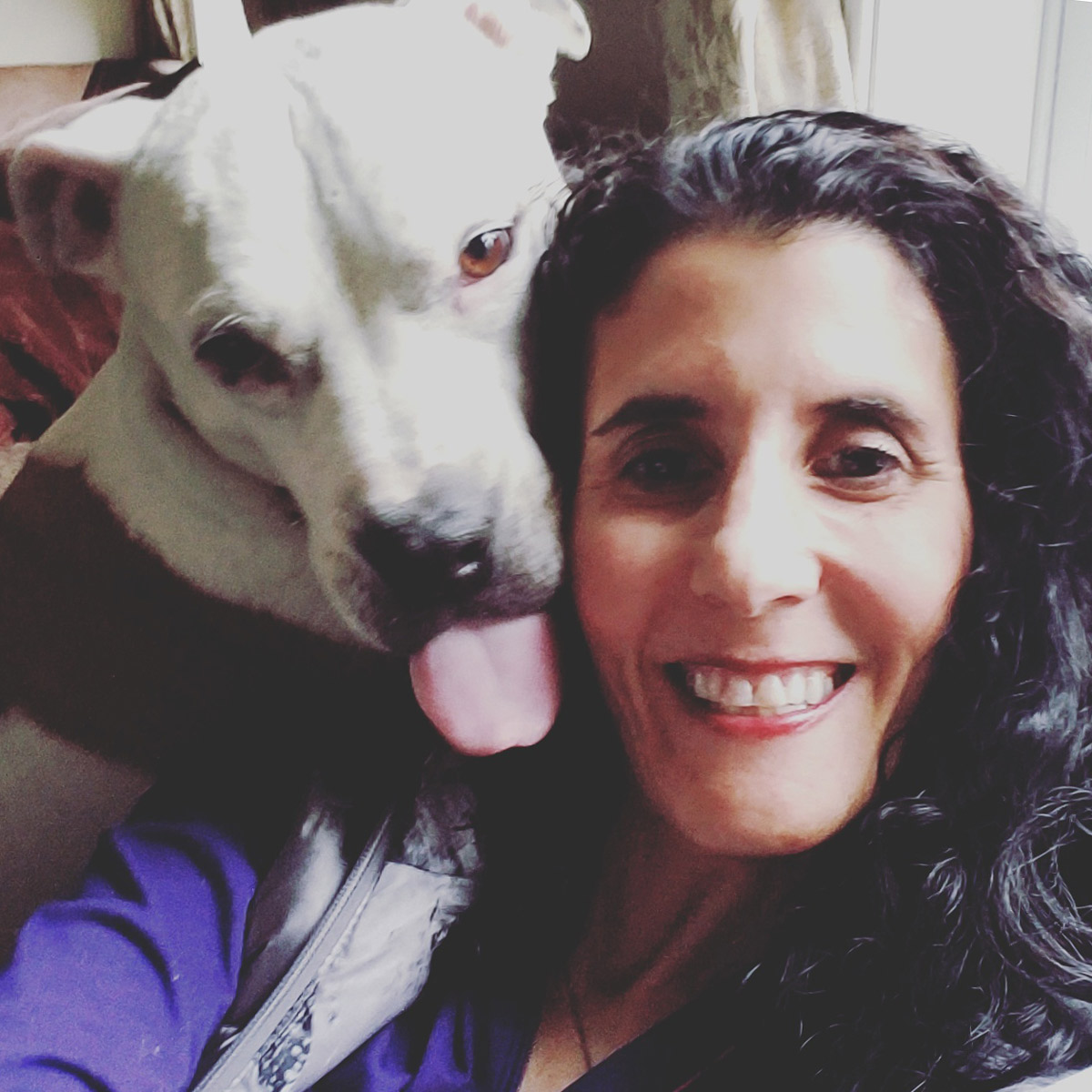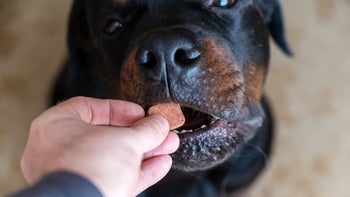
Is a Grain-Free Diet Bad for Dogs? Usually, and Here’s Why
Key takeaways:
The grain-free dog food movement led some concerned pet owners to believe that feeding grain-free food to dogs could help with allergies, food sensitivities, and weight management.
Dogs need grains in their food. Grains have many health benefits, including providing essential nutrients and assisting with eliminating waste.
A healthy dog diet is one that meets Association of American Feed Control Officials (AAFCO) standards for being “complete and balanced.”
Table of contents

If your dog has seasonal allergies or food sensitivities, someone may have suggested you try putting your pup on a grain-free diet. The idea that grain-free food is better for dogs arose after a 2007 pet-food contamination incident and was then fueled by the gluten-free trend in human diets. As it gained steam, many pet parents started to believe grain-free diets were the healthy option for their furry friends.
Yet, despite all the hype, the idea that you can treat your dog’s allergies by feeding them a grain-free diet is primarily a myth. Dogs with food allergies or sensitivities are rarely allergic to the grains in their diet. And there are potential risks of omitting grain from your pup’s plate.
Is grain-free food bad for dogs?
In most cases, yes, grain-free food is bad for dogs. There is no medical basis for feeding your dog a grain-free diet. The only exception is if your dog has a specific condition and you are advised to do so by your vet.
Save on the top 10 pet medications
Save big on common pet medications like Fluoxetine and Levetiracetam at your local pharmacy.

GoodRx is NOT insurance. GoodRx Health information and resources are reviewed by our editorial staff with medical and healthcare policy and pricing experience. See our editorial policy for more detail. We also provide access to services offered by GoodRx and our partners when we think these services might be useful to our visitors. We may receive compensation when a user decides to leverage these services, but making them available does not influence the medical content our editorial staff provides.
In short, no studies indicate that grain-free diets are better for dogs than diets with grain. And grain-free diets may lack essential nutrients your dog needs to stay healthy.
What is grain-free dog food?
Grain-free dog foods do not contain common grain ingredients like:
Corn
Soy
Wheat
Rice
Barley
Instead, these diets replace grains as a carbohydrate source with substitutes like:
Potatoes
Beans
Peas
Lentils
Carrots
Cranberries
Sweet potatoes
Chickpeas
What is the argument for grain-free dog food?
The grain-free dog food movement grew out of concern over feeding corn to dogs with allergies. So potatoes and sweet potatoes were put in place of corn as a carbohydrate source in grain-free dog foods.
Pica in dogs: Socks, toys, and other nonedible items aren’t supposed to be part of your dog’s diet. Dogs who consume these items may have a condition called pica.
Is it time to change your dog’s food? If so, you’ll want to make the switch gradually over 5 to 7 days. Here’s a schedule to follow.
Appetite loss: There are a number of common reasons dogs stop eating. If your pup has lost their appetite, call your veterinarian for advice.
Many people then began feeding grain-free foods to their dogs to reduce canine allergies. But a small number of dogs have sensitivities to grains. Most dog food allergies are a reaction to the protein sources in food rather than the grains.
Some people also started feeding grain-free diets to their dogs for weight control. Grain-free foods are sometimes lower in carbohydrates. But they are often higher in fat and calories, so this is not an effective way to control your dog’s weight.
Quiz: What human foods are safe for dogs?
Why do dogs need grains in their diet?
Throughout history, dogs have been omnivores. This means they’ve eaten both meat and plant products, including grains.
Grains offer many health benefits, including assisting with the elimination of waste. Additionally, grains supply the following essential nutrients:
Iron
Thiamine
Calcium
Riboflavin
Folate
Niacin
Read more like this
Explore these related articles, suggested for readers like you.
Dogs who eat grain-free diets may not get sufficient amounts of these nutrients.
Can grain substitutes cause health issues in dogs?
The research is ongoing, but there is evidence to suggest that carbohydrate substitutes used in grain-free foods provide less fiber than grains. These substitute ingredients may also cause digestive problems in some dogs.
Grain-free diets and heart disease
One of the biggest health concerns under investigation is a link between grain-free dog diets and dilated cardiomyopathy (DCM). DCM weakens the heart muscle and decreases its ability to pump blood throughout the body.
In 2018, the FDA began investigating the potential connection between DCM and grain-free diets. Early research suggests diets with higher amounts of legume seeds like peas and lentils have the strongest association with DCM. And recently, researchers have suggested that grain-free diets with more peas have the strongest association with heart disease.
Grain-free foods and other “designer” dog foods may contribute to taurine deficiencies in dogs. Taurine is an amino acid responsible for heart health and many other bodily functions. DCM seems to be associated with taurine deficiency, and this may be the link between a grain-free diet and DCM in dogs.
How do you choose the best food for your dog?
When choosing dog food, it is essential to pick food that provides a complete and balanced diet for your dog. Dogs’ individual nutritional needs vary depending on their age, size, and medical conditions. But in general, all dogs need ingredients that provide the following in their diet:
Protein
Fats
Fatty acids
Carbohydrates
Fiber
Vitamins
Minerals
Water
All commercial pet foods must meet standards set by the Association of American Feed Control Officials (AAFCO) to be considered “complete and balanced.” You can check a food’s nutritional adequacy statement, which is usually on the package's side or back, to find out if it meets these standards.
If you have questions about the best diet for your dog, you can also talk to your veterinarian.
The bottom line
There is no research to indicate that dogs should be on a grain-free diet unless instructed by a veterinarian. Not feeding your dog grains could cause health problems since grains provide essential nutrients. There is also some concern that grain-free diets contribute to heart problems in dogs.
When picking out dog food, make sure to choose food that is complete and balanced according to Association of American Feed Control Officials (AAFCO) standards. If you’re unsure, ask your veterinarian for advice.
Why trust our experts?



References
Associated Press. (2007). FDA blocks wheat gluten from China. CBS News.
Association of American Food Control Officials. (2015). AAFCO methods for substantiating nutritional adequacy of dog and cat foods.
Association of American Food Control Officials. (n.d.). How to understand a dog or cat food label.
Brooks, W. (2023). Food allergies in dogs and cats. Veterinary Partner.
Coile, C. (2021). Is grain-free dog food bad? American Kennel Club.
Freeman, L. M., et al. (2018). Diet-associated dilated cardiomyopathy in dogs: What do we know? Journal of the American Veterinary Medical Association.
Kittleson, M. D. (2023). Dilated cardiomyopathy in dogs and cats. Merck Veterinary Manual.
Quilliam, C., et al. (2023). Effects of a 28-day feeding trial of grain-containing versus pulse-based diets on cardiac function, taurine levels and digestibility in domestic dogs. PLOS One.
Sanderson, S. L. (2023). Nutritional requirements of small animals. Merck Veterinary Manual.
Smith, C. E. (2021). Investigation of diets associated with dilated cardiomyopathy in dogs using foodomics analysis. Scientific Reports.
U.S. Food and Drug Administration. (2022). FDA investigation into potential link between certain diets and canine dilated cardiomyopathy.
Wara, A. (n.d.). Nutritional benefits of corn and grains for dogs and cats. VCA Animal Hospitals.
Weeks, N. (2021). Should you feed your pet grain-free foods? Humane Society of Harrisburg Area.



























